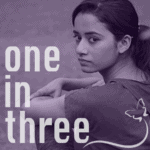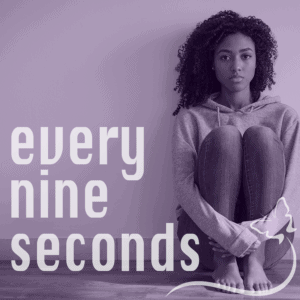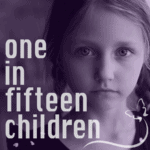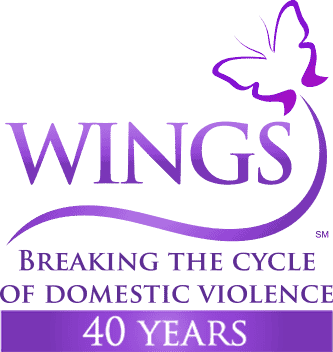What is domestic violence?
- Posted by Anna Bard
- On January 5, 2021
- domestic abuse, Domestic Violence, intimate partner violence, spousal abuse, WINGS, WINGS Program
Breaking the cycle of domestic violence is at the center of everything we do at WINGS, but what is domestic violence, and how does it present itself in a relationship?
Domestic violence is known by many names: domestic abuse, intimate partner violence, spousal abuse, but no matter what it’s called, one thing is for sure: domestic violence does not discriminate. It affects men and women. Children and adults. It affects heterosexual as well as same-sex partnerships. Abuse reaches across all education and socioeconomic levels and happens in all ethnic, racial, and religious groups.

And these are not isolated incidents. The Chicago Police Department receives an average of 500 domestic violence calls each day. That adds up to over 182,000 calls a year.
Those are just the instances that are reported – many times domestic violence goes undisclosed.

We know that 1 in 3 women and 1 in 4 men experience domestic abuse. Here in the U.S. domestic violence is the single greatest cause of injury to women.
 A woman is assaulted or beaten every 9 seconds.
A woman is assaulted or beaten every 9 seconds.
The impact of this abuse is devastating.
It harms more than just the victim, domestic abuse affects entire communities: friends, family members, coworkers and neighbors. Sadly, it can even create lasting damage for children.

You may be shocked to learn that 1 in 15 children are exposed to intimate partner violence each year.
Whether they are the victims of domestic violence or only exposed to it in their households, the 7 million children and adolescents who witness domestic violence each year are very likely to develop behavioral problems. These can include:
- Out of control behavior
- Regression
- Substance Abuse
- Academic failure
- Guarded and secretive behavior
These children grow up with an increased likelihood of becoming not just abusers, but victims of domestic violence themselves.
It’s hard to tell whether a partner will eventually become abusive.
Most relationships start off normally. As time goes by; however, behaviors change. A partner may become more controlling as the relationship grows. He or she may become possessive of the other person. These changes usually don’t happen overnight. They often occur gradually.
Domestic violence is not limited to physical violence. It takes many forms. It may involve verbal or emotional abuse. Domestic violence may include sexual or economic abuse. In some cases, the perpetrator will intentionally destroy the intended victim’s property or harm their pets. In some cases, the abuser will isolate the victim from family and friends.
These are some types of domestic abuse and how they affect victims in your community.
Physical Abuse
Physical abuse is perhaps what most people picture when they think of domestic violence. These behaviors can include:
- Punching, hitting, shoving or kicking
- Burning
- Scratching
- Biting or hair-pulling
- Damaging personal property
- Controlling access to medical care
These are all ways abusers can physically assault their victims, and can present an immediate threat to the victim’s safety and wellbeing.
Psychological/Emotional Abuse
Some abusers engage in psychological abuse to control their partners. They use intimidation to cause fear and gain control.
This abuse can include threats to hurt themselves, their partner, family members, friends or pets. Some will work to isolate their partners from loved ones or prevent them from engaging in activities they enjoy.
Emotional abuse can also be:
- Extreme jealousy
- Isolation
- Control over activities and movement
- Limiting contact with family and friends
- Stalking
Verbal Abuse
Abusers often try to exert power by breaking down their partner’s sense of self-worth. They may engage in:
- Name-calling
- Frequent criticism
- Blame
- Shame and humiliation
Their words are meant to damage their partner’s self-esteem, making it easier for the abuser to wield power over the victim.
Economic Abuse
Economic abuse occurs when one partner limits access to financial assets in order to control the other partner. Many abusers seek to exert total control over the couple’s financial resources.
An abuser may:
- Withhold money to make the partner financially dependent on him or her
- Control financial assets
- Forbid their partner to go to work and earn money
- Inflict harm that would prevent the victim from attending work
Shockingly, 8 million paid work days are lost each year to domestic violence. This means that domestic violence in this country costs $8.3 billion every calendar year.
Without access to financial resources, the victim’s options are severely restricted, sometimes dangerously so. This abuse often occurs alongside emotional and psychological abuse.
Sexual Abuse
Sexual behavior performed without a partner’s consent is sexual abuse. Sexual abuse can include:
- Hurting a partner during sex
- Forcing a partner to have sex with other people
- Engaging in sexual activity when partner is not able to give consent
- Forcing pregnancy by coercion or sabotaging birth control
Coercing a partner to engage in any sort of sexual act is abuse unless the partner willingly agrees. Making a partner engage in sex following physical violence is sexual abuse.
Cyberstalking and Technological Abuse
As our society has technologically advanced, new methods of abuse have become a presence in abusive relationships. Abusers may use technology to track or control their victims. Cyberstalking is another type of abuse in which one party directs harassing or threatening behavior toward the intended target. Stalkers typically engage in repeated behavior that causes fear for their victims. They may repeatedly attempt to contact their victims despite being aware that the communication is unwanted.
This abuse can include:
- Hacking into personal accounts
- Tracking their partner’s movement
- Monitoring their partner’s interactions on the internet
- Cyberstalking
- Online harassment
Spiritual Abuse
Spiritual Abuse is the use of scriptures, traditions, and cultural norms to assert power and control over an intimate partner. Spiritual abuse can be:
- Preventing their partner from practicing religious beliefs
- Using religious beliefs to instill fear
- Mocking religious beliefs or practices
It is not limited to a certain religion or denomination. Any person, of any belief system, is capable of perpetrating spiritual/religious abuse.
Domestic violence takes many forms and can look very different depending on the relationship. One thing that is very common in a domestic violence situation is that the abusive partner exerts power and control over the other partner in at least one of these ways. Knowing how to recognize the signs of domestic violence in a relationship is an important step in beginning to break the cycle.
At WINGS, our goal is to provide a pathway that leads away from a life of chaos, abuse and fear and towards a future of safety and independence. If you or someone you know needs help, call our 24-hour hotline at (847) 221-5680.

0 Comments